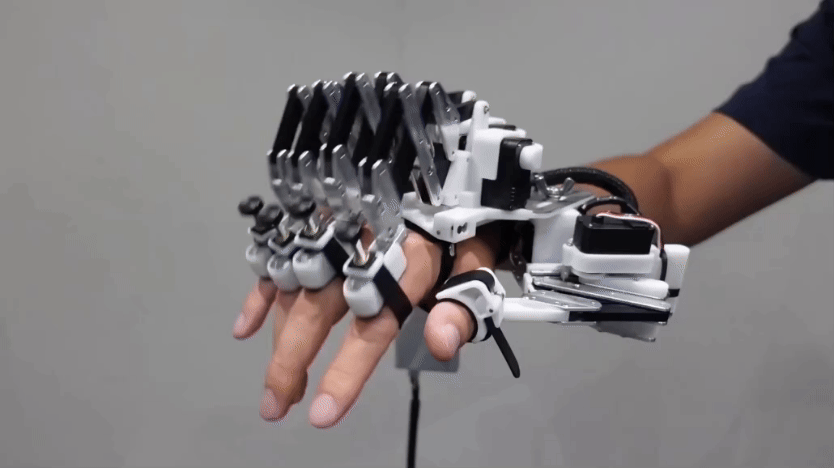These scientists are getting inside your head
These women study brain and behavior in humans and beyond

Smita Patel has been studying how brain cells break down — or degenerate — at the University of California, San Francisco.
S. Patel
When you are reading the text on this page, it might be easy to forget what’s going on behind the scenes. The cells in your brain are firing messages back and forth millions of times per minute, making your eyes move and your fingers swipe. Other cells process the language you read and help it all make sense.
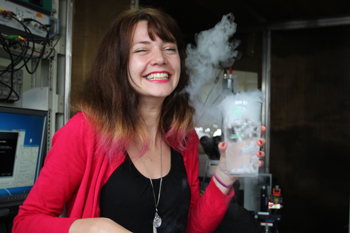
How do we know all that? Because of neuroscience — the study of the brain. Science News for Students recently put out a call for women in science, technology, engineering and math (STEM) to send us photos, videos and sound clips. Among our more than 150 responses from 18 countries, we got a bunch of neuroscientists. Check out the zany and brainy things that they do.
Elodie Chabrol
Chabrol didn’t start out big into brains. “I hated neuroscience at [university] and wanted to avoid it,” she says. She was more interested in genetics. But as she studied more science, she got more into brains. Now, she’s a neuroscientist at University College London in England. She’s trying to find cures for epilepsy — a brain disorder that causes seizures.

Lauren Drogos
Drogos studies how hormones — chemicals produced in glands and carried through the body in the blood — affect the way we think and behave. She’s a neuroscientist at the University of Calgary in Canada. “I use many different techniques to answer questions about hormones and the brain,” she says. “Because of this, I get work in many different types of labs.” When she’s studying hormones in people’s saliva or blood, she works in a traditional laboratory. When Drogos is studying how her subjects think, she meets them in an office. And when she’s studying their brain activity, she works with large scanners called fMRI machines. (That’s short for functional magnetic resonance imaging.) “I love being able to do many different techniques in my research; it makes every day different and exciting,” she says.
Science sends people around the world for their work. Drogos has her own way of keeping in touch with her friends and colleagues. “One of the perks, and sometimes downsides, of being a scientist is that I have good friends across the entire globe,” she says. “I don’t get to see many of them frequently, so one wall in my office is filled with postcards from them. In some ways, it makes me feel like I get to hang out with all of my best nerdy friends every day!”

Sarah Ferri
Autism is a term that describes a set of disorders that interfere with how certain parts of the brain develop. These disorders can affect how an individual interacts with others. Ferri is trying to find out how autism works, and why it tends to affect more boys than girls. She’s a neuroscientist at the University of Pennsylvania in Philadelphia. “We use a mouse model of autism that has genetic mutations similar to those found in individuals with autism,” she says. The mouse is a stand-in for humans in this research. To study the mice, Ferri explains, “we characterize their behavior … and examine the structure and function of their brains.” Like us, she notes, mice are very social creatures.
Outside of the lab, Ferri loves to dance, shop, bake and do yoga. And she really loves her dogs!

Kim Gerecke
If you needed another reason to exercise — other than simply staying healthy and fit — Gerecke has a good one. She’s a neuroscientist at Rhodes College in Memphis, Tenn. Her lab studies how exercise can protect the brain from toxic effects of stress.
Gerecke makes good use of her findings by staying active. “When I’m not teaching or researching neuroscience, I love to hike with my dogs and kayak the cypress lakes and rivers nearby,” she says.

Christin Godale
Godale is just beginning her journey in brain science. She is a graduate student at the University of Cincinnati in Ohio. One day, she hopes to find a better treatment for epilepsy. “We are on the brink of a golden age in neuroscience, and I believe that anything in research is possible to achieve with persistence and passion,” she says.
Graduate school is a full-time job, but outside of the lab, Godale says, “I like to dabble with photography, listen to 70’s music and wear cute shoes.”

Georgia Hodes
Before she was in science, Hodes preferred the stage. “I was a drama major in college and acted in New York for several years,” she says. Now, Hodes is a neuroscientist at Virginia Tech in Blacksburg. Some mental health disorders, such as depression and anxiety, are linked to the amount of stress people have in their lives. Stress activates the immune system — a collection of cells that helps our bodies fight off infection. Hodes is looking into how all of this is connected. She says, “I explore how the immune system and brain interact to make some individuals more susceptible to stress and stress-related disorders like depression and anxiety.”
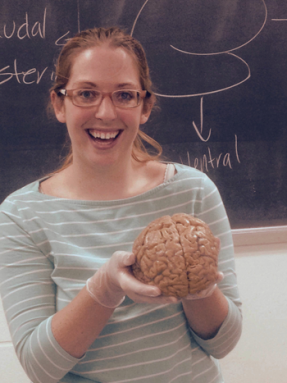
Molly Hyer
When Hyer was young, she didn’t have a lot of love for icky things. “I never liked rodents or bugs as a kid and thought I wanted to be a therapist,” she says. “In college I learned about neuroscience and was hooked.” Now, she’s a neuroscientist who studies how hormones can change the brain and behavior. She works at the University of Maryland in College Park. She handles mice, rats, frogs and more fearlessly. And she trains her students to do the same. “I love seeing my female students reach that same milestone when they willingly (not always eagerly) put their hand into a barrel of roaches to select their subject for observation but the men in the room refuse to do it,” she says.
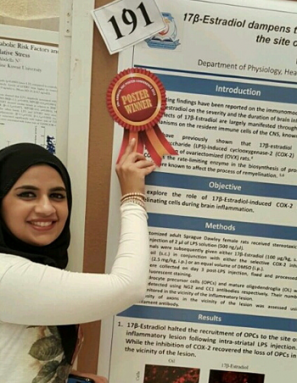
Samah Kalakh
Multiple sclerosis is a disease that attacks the coatings around parts of brain cells. These coatings allow brain cells to send messages at blinding speeds. Without them, messages slow and stop. As a consequence, people with multiple sclerosis can have difficulty moving or walking. Some even end up paralyzed.
Kalakh is trying to find new treatments to help re-form the coatings around these brain cells and get communication flowing again. She’s a graduate student at Kuwait University in Al-khaldiya. Outside of the lab, she says “I am passionate about painting on glass and selling my paintings for different causes.” You can see some of her artwork here.

Marthe Ludtmann
Both Parkinson’s disease and Alzheimer’s disease are disorders that are neurodegenerative — they result from the death of formerly health brain cells. Ludtmann is a neuroscientist at University College London who is working to find out how these disorders occur. “I employ live cell imaging technologies to unravel what goes wrong in those neurodegenerative diseases and how we can stop this from happening,” she says. In her free time, she bakes, runs and likes to do ballet.

Sophie Meekings
Meekings is also a neuroscientist at University College London. “My research is all about how people control their voice,” she says. “I use fMRI (brain scanning) to see what people’s brains are doing when they change their voices (for example, when they have to speak over noise). At the moment I’m working on a study with people who stammer, trying to find out what makes their brains unique.”
Meekings love cats. And axes. Yes, axes. “I volunteer for an outdoor education charity, where I spend a lot of my time fixing axes and teaching children to use them,” she says. “I also take [kids] up mountains and teach firelighting.”

Sam O’Hanlon
O’Hanlon is the first in her family to have finished a four-year college degree. She didn’t stop there, though. She went on to graduate school to study neuroscience, working with mouse models for autism. Now she teaches online neuroscience classes for the University of Hawaii, Oregon State University and Dakota State University.
Neuroscience didn’t just teach her about the brain. It also taught her math skills that she’s use for her new field of research — helping scientists who study bacteria.
Smita Patel (pictured at top)
Patel has been studying neurodegenerative diseases and how to stop them at the University of California in San Francisco. This past September celebrated her 10th year in the lab. In her free time, she says, “I’m a huge sports nut — especially softball, baseball and cricket.”
Christine Sandiego
Sandiego works for Molecular NeuroImaging. It’s a division of a biotechnology company called InviCRO. There, she designs molecules that are radioactive and can be used to study chemical messengers inside the brain. The rest of the time, she loves to dance. “I’m a dance-a-holic,” she says. “I currently dance lyrical and hip hop at a studio, United Rhythms. I also can dance salsa, samba and Argentine tango.”
Listen to Sandiego talk about her work below.

Leah Singh
Many studies of how people behave involve taking tests. These might be tests for attention or memory, for example. But how do you know if your test is, well, testing the right thing? Ask Singh. She is a graduate student at the University of Memphis in Tennessee. She evaluates behavioral tests that are used on kids to see how well the tests measure what they are supposed to study. “This informs practice and decisions made from scores by letting clinicians know how confident they can be in a kid’s test results,” she explains. She may work with kids and testing now, but Singh loves animals. Someday, she says, she wants to own an animal sanctuary.
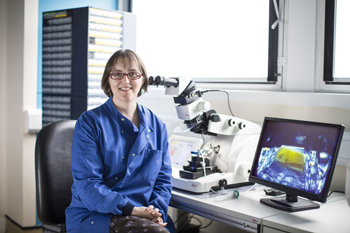
Tara Spires-Jones
Many scientists have had to present their work to an audience. The experience can be nerve-wracking enough. But Spires-Jones has talked to an even more intimidating listener. Spires-Jones, a neuroscientist at the University of Edinburgh in Scotland, has spoken with royalty! “I presented our work to Her Royal Highness, Princess Anne, when she came to the University to open a new Centre for Dementia Prevention,” she says. (Princess Anne is the daughter of England’s Queen Elizabeth II.) “That’s something I never thought I would do!”
If you enjoyed this series of women in STEM, check out our posts on female astronomers, biologists, biomedical scientists, chemists, ecologists and geologists!
Follow Eureka! Lab on Twitter





